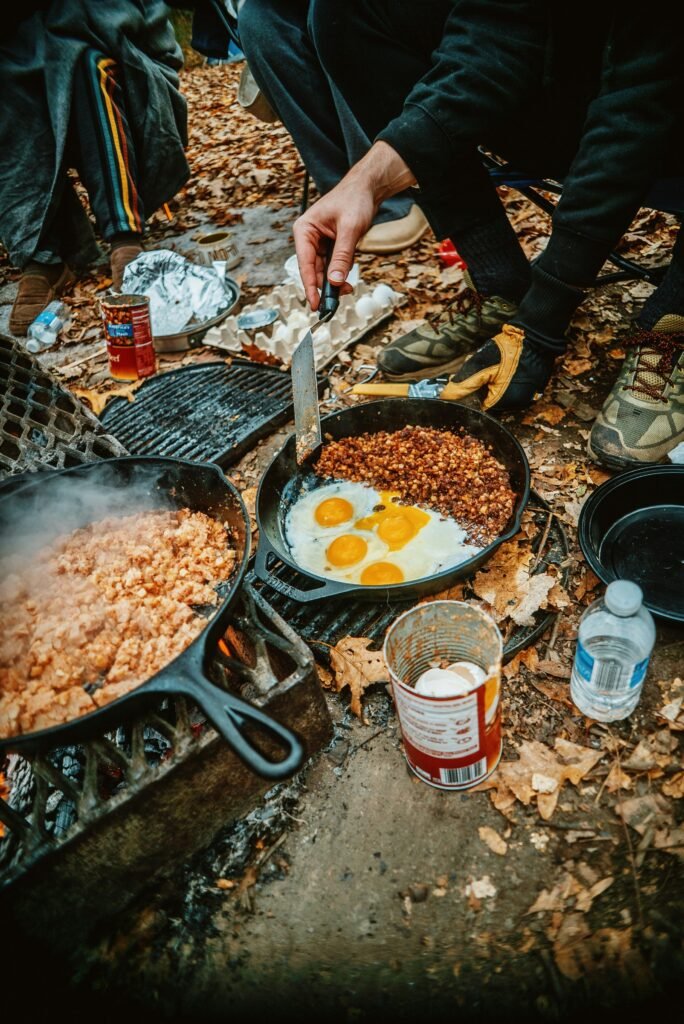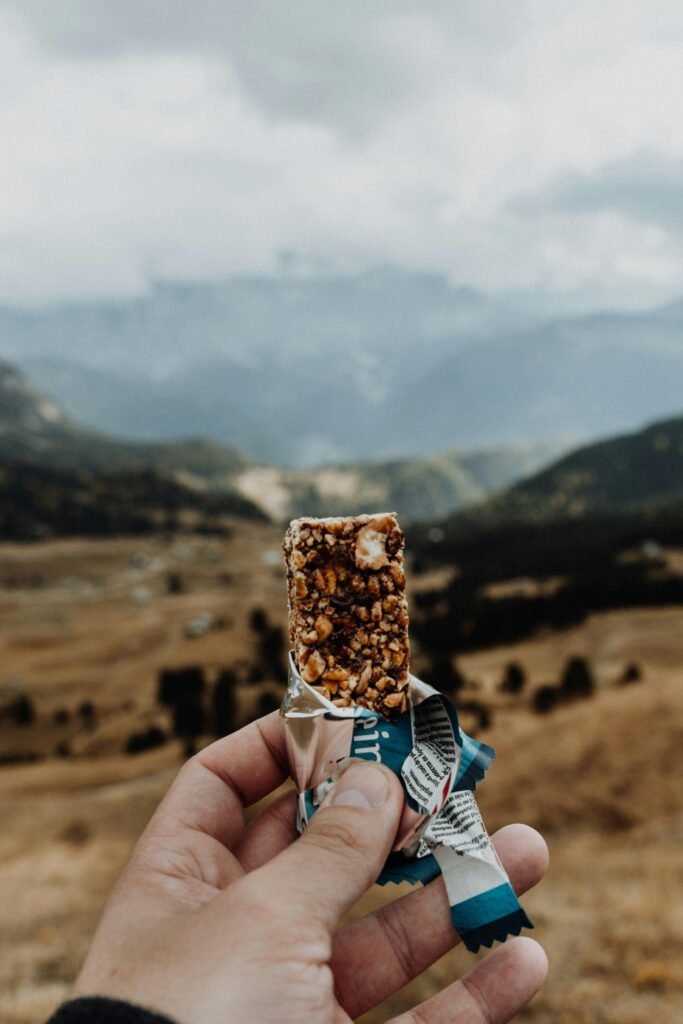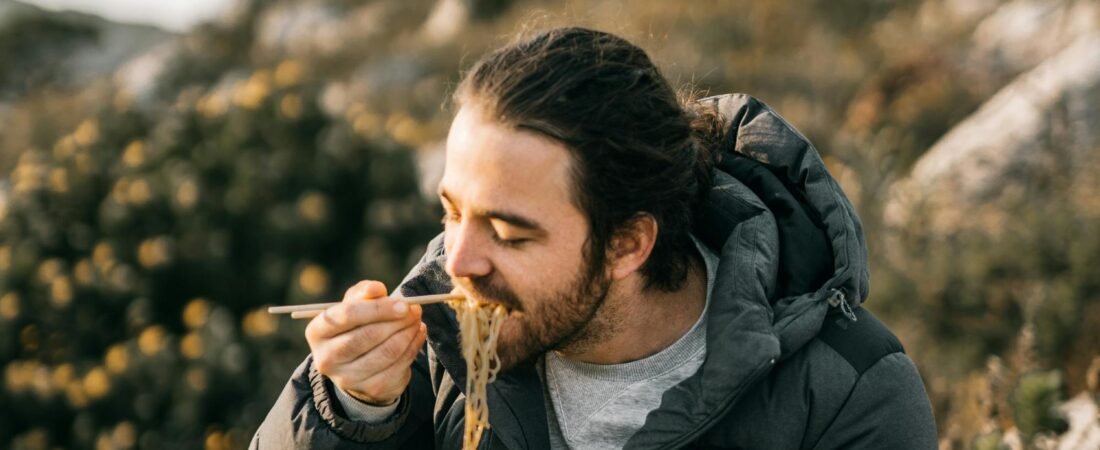Last updated: June 2025
Whether you’re skipping the stove to save weight or just want fast, fuss-free trail food, these no-cook hiking meals and snacks will fuel your adventure without sacrificing flavor or nutrition. From hearty wraps to cold-soak meals and high-calorie snacks, this guide is packed with easy, trail-tested options for breakfast, lunch, dinner, and everything in between.
Table of Contents
*This post may contain affiliate links. If you use them, I may earn a small commission at no extra cost to you.
🥗 Trail Nutrition Basics: What Your Body Needs
Hiking burns 2 to 3 times more calories (hiking calorie calculator) than a normal day at home—especially on elevation-heavy or multi-day treks. Your body is working harder, which means it’s using up:
- Carbohydrates: Your main fuel source—used up quickly, especially on steep climbs
- Fats: Provide slow-burning energy that supports endurance
- Protein: Helps repair muscle tissue and keep you feeling full
- Electrolytes: Sodium, potassium, and magnesium are lost through sweat and need regular replenishing
What this means for your meals: Don’t just snack—fuel strategically. Include a mix of fast carbs (fruit, granola), healthy fats (nuts, seeds, oils), and complete proteins (jerky, tuna, nut butters). Add salty snacks like crackers, trail mix, or cheese to keep electrolytes balanced.
🥣 Why Go No-Cook on the Trail?
- Save weight: No stove, fuel, or cookware needed
- Faster setup: Eat on the go or right at camp
- Safer in dry or fire-restricted areas
- Less cleanup and water use

🍳 No-Cook Breakfast Ideas
- Overnight oats: Oats + powdered milk + dried fruit + protein powder + water (cold soak overnight)
- Chia pudding: Chia seeds + nut butter + honey + coconut milk powder (shake in a jar, wait 20–30 mins)
- Granola + yogurt powder + dried fruit
- Bagels with peanut butter, Nutella, or cream cheese
And let’s be real—sometimes you’re just too tired to cook after a long day of hiking.
🥪 No-Cook Trail Lunches
- Tuna or salmon packets + tortillas
- Hummus + spinach + shredded carrots in wraps
- Cheese + crackers + cured salami or summer sausage
- Antipasto salad: Olives, artichokes, cheese, sun-dried tomatoes, and salami (use olive oil + vinegar packets)
- Nut butter sandwich with banana chips or dried apples
🍲 Cold-Soak Meals (No Heat Needed)
Cold soaking is the hiker hack of champions. All you need is a jar and some patience. Add cold water to your meal 30–60 minutes before eating.
- Instant couscous salad: Add sun-dried tomatoes, chickpeas, olive oil, and spices
- Cold ramen: Instant ramen + peanut butter + soy sauce + crushed peanuts (Thai-inspired)
- Refried beans + Fritos + cheese (cold taco bowl)
Tip: Pre-mix ingredients into ziplock bags before your trip and label each one.

🥜 High-Calorie Trail Snacks
- DIY energy balls: Oats + peanut butter + honey + dried fruit + chocolate chips
- Trail mix: Nuts, seeds, dried fruit, chocolate or yogurt chips
- Jerky: Beef, turkey, or vegan options (high protein, compact)
- Single-serve nut butter packets: Almond, peanut, or tahini
- Dried fruit bars or fig rolls
- Cheese sticks or waxed cheese rounds (like Babybel)
🥡 Smart Packing Tips
- Pre-portion into labeled zip-locks for easy grab-and-go meals
- Pack a separate cold-soak container (like a Talenti jar or Vargo BOT)
- Always bring a little more food than you think you’ll need—hiking burns serious calories. (Don’t overdo it though)
- Balance macronutrients: include fat + carbs + protein in every meal.
- And if you drink coffee, I find it worth packing a way to make it. Yes, it is a luxury, but I found it worth the extra worth and effort everytime.
At this point it can be easy to start counting every calorie and every mineral. To read labels and weigh every gram of food. Truth is – unless you are doing a several month hike on uninhabited area, conditions change and the last thing you want is to stress about a missed meal or lack of food, if your hike lasts a day longer. So pack to be prepared, but as one Reddittor says – don’t overthink:
“You are overthinking this. Assuming a good diet at the start, then eating crap for 2–3 weeks is not gonna bring you to any form of malnutrition. So going over every single nutrient is kinda pointless. Make sure to cover enough calories and bring stuff you actually want to eat in the backcountry after 2 weeks.”
– Reddit user Boogada42 on r/Ultralight
Translation: Don’t obsess over nutrition labels. Just make sure your food is calorie-dense, easy to eat, and something you’ll actually want to consume at mile 10, day 5.
✅ No-Cook Hiking Food Checklist
- Overnight oats / Chia pudding packets
- Cold soak-ready couscous, ramen, or bean bowls
- Tortillas, crackers, and wraps
- Protein: tuna, salmon, jerky, nut butter
- Snacks: trail mix, bars, energy bites
- Single-serve condiments (nut butter, oil, soy sauce)
- Cold soak container + long spoon
🧭 Frequently Asked Questions
How do I cold soak meals on the trail?
Use a leak-proof container like a Talenti jar or a dedicated cold-soak cup. Add your dry ingredients and water about 30–60 minutes before you want to eat. Shake occasionally and let it rehydrate while you hike or set up camp.
How many calories should I pack per day for hiking?
Most hikers need 2,500 to 4,500 calories per day depending on intensity and weight. Aim for calorie-dense foods with at least 100–150 calories per ounce to save pack weight while fueling well.
Can I survive on no-cook food for a long thru-hike?
Absolutely. Many long-distance hikers go stoveless. As long as you pack enough calories and variety, there’s no need to cook daily. The key is choosing food you’ll actually want to eat when you’re tired, sore, and hungry.
What’s the best container for cold-soaking?
Ultralight hikers love using Talenti ice cream jars, but more durable options like the Vargo BOT or CNOC Vesica bottle also work. Make sure the lid seals tight and it’s easy to clean.
Is trail mix enough for a full lunch?
It can be—if it includes a mix of fats, carbs, and protein. Consider pairing trail mix with dried meat, a nut butter packet, or a granola bar for a more complete lunch.
Final Thoughts
No-cook trail food doesn’t have to mean bland. With a bit of planning and creativity, you can enjoy varied, tasty, satisfying meals every day—without firing up a stove. Whether you’re thru-hiking, on a weekend trek, or just skipping the camping stove for fun, these easy no-cook hiking meals and snacks will keep you fueled, fast and light.
Got your own favorite trail snack? Share it in the comments or connect directly through contacts section!
If you’re preparing for your first hike, check out:
How to Start Hiking: A Beginner’s 12 Step Guide and 10 Common Beginner Hiking Mistakes (And How to Avoid Them)

Leave a Reply